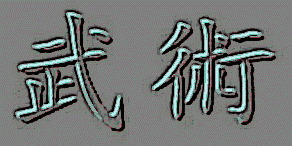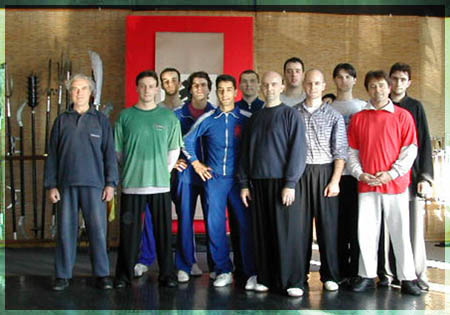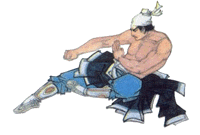

Publications
Deux articles parus dans Kung Fu Magazine, numéros d'août-septembre et d'octobre-novembre 2015.
Magazine : UNIL, ISSEP - Responsabilités dans le sport (novembre 2004)
Ethiques des athlètes, comparatifs entre la Grèce et la Chine antique
A paraître au printemps 2005 - University of Pennsylvania
(Department of Asian and Middle Eastern Studies) SPP:
Le greco bouddhisme et l'art du poing en Chine
Conférences
Au semestre d'été 2005 - Université Populaire de Lausanne
D'Olympie à Shaolin -
Transmissions et pratiques
Université populaire de Lausanne
Place Bel-Air 2,
Case postale
1002 Lausanne
Tél. 021 312 43 48
Fax 021 311 50 73
info@uplausanne.ch
www.uplausanne.ch
Derniers ajouts
Gao Zhankui
Xu Yun, le dernier Arhat
Shaolin gongliquan
Learning Wushu in China
(Advices for the Kungfu Foreigner in China)
Chen Taiji and Hunyuan Qigong, the deep
heritage of the past
Why the builders of Liqian are probably Greeks
Lucas Christopoulos January 2003
The discovery of the Liqian town and his descendants by Professor Harris
just before the Tiananmen student repression has left many people perplex.
From that time, there was not anymore archeological research in Liqian,
and the proposition of that the descendants of the Daqing ren are Romans
has been accepted by some.
Well, if you are carefully searching the origin of the name Daqing of
the Han Chinese, you will first now that it was related to the Greeks.
Daxia, was first known by the Chinese as Bactria in the Han Dynasty when
it was still occupied by the Greeks (see my text concerning the Greeks
in French).
Then it was two other kingdoms known as Dawan and Dayuan (Ferghana) also
occupied by the Greeks. The prefix Da (Big) was the denominator used by
the Chinese for the Greeks, because of there unusual stature.
Later on, Daqing was the denomination of the Orient Greek for many reasons:
-Rome was to far, Greeks presents in Asia where still there till the
Parthian Invasion
-From the Parthian Empire, Romans where cut off Asia and had to use transits
for trade
-The last Greek king of Kabul was still alive around 40 BC to 50 AD (depends
of the scholars) and that prove that Greek presence as a cultural entity
and military power was strong for more than 300 years in Bactria.
-The later contacts of the Tang Dynasty with the Greek kings of Constantinople
was literally referring them as Daqing.
As we can make the mistake as saying that first, the Chinese known the
Greeks of central Asia as Yunxiu ren (Yunkio) Yonakas, with the conquests
of Alexander, later on it changed as Daqing with the emergence of the
Roman empire, but the principal cultural entity of westerners in central
Asia where not Greco-Romans, but Hellenistic.
I don't think we can really talk about Greco-Romans in central Asia, because
Gandhara and generally Hellenic presence in Asia developed in a very different
way that the one in Europe. Again here, we don't have to have the same
eyes on European development and the central Asian one.
With Liqian, I had to contact many different specialists, some of the
Chinese 'cultural bloc' historians and the western antique 'cultural bloc'
historians.
In fact I has a little success with them and my idea as convinced more
young specialists of central Asia such as Nicola Dicosmo, Vicor H.Mair,
Osmund Bopearachchi, and Boris Marchak, thanks to there interest and open
mind.
Liqian was for me a group of Greek mercenaries used by the Xiongnu in
north Bactria, after the successive invasion of Yueshis and Xiongnu.
Then, they got captured by the Han Chinese and constructed a town with
the name of Liqian.
In fact, the people descendant from Liqian had tald me that the name Liqian
was used as 'name for cities in Daqing empire'. It sounded to me an old
transcription of Likian, that we could related to Yalikian (Alexandria).
The last Alexandria build by the Greeks in memory of there parents who
wanted to conquer the far east.
The habitants of Liqian are practicing a dance with a stick that was originally
a spear. They say that they practice this from there Daqing ancestors,
and as I know, only the Greeks where practicing martial dance Pyrrichion
with spears, not the Romans.
I think that for me it is clear and very logic that the Daqing people
are descendants from Greek colonies of central Asia, as they are some
in Mongolia (they have a similar history of the Liqian people, getting
as Mercenary from the Xiongnu).
In stead as saying what other has written out, without searching, I plan
some Archeological investigations with the sponsor help of the Greek lobby
and numerous central Asia specialists to prove my thesis.
Stage du poing de Shaolin à
Florence
Le 8 et le 9 décembre 2001, l'école des arts martiaux chinois
de Florence en Italie a décidé d'intégrer le style
'Shaolin Zhouquan Tui' dans les cours réguliers de
son programme.
Deux jours de pratique et d'enthousiasme ont permis aux Florentins de
découvrir le vieux système du monastère de Shaolin.
Lucas Christopoulos a dirigé le stage avec ses amis et pratiquants
de wushu de haut niveau. Cette expérience se répétera
au mois de février 2001, où des athlètes venus d'autres
endroits d'Italie ou d'autres pays auront la possibilité de participer.
Tout le monde sera bien sûr le bienvenu lors ce deuxième
stage de février, un niveau de base étant toutefois préférable.
Pour plus d'informations, prenez
contact.
ISTITUTO WUSHU CITTA DI FIRENZE
via del Ronco Corto, 35
50143 FIRENZE
Tel/fax: (0039) 055-7399214

L'art du
bâton chinois
C'est après un mois de voyage à travers les provinces du
Gansu, Hebei, Henan et Shandong que j'ai pu me rendre compte de l'état
de l'art du bâton si fameux en Chine.
Historiquement, on connaissait l'art du bâton de Shaolin qu'affectionnaient
les bonzes guerriers, car ils pouvaient ainsi frapper sans tuer. Une multitude
de techniques prirent alors forme, mais peut d'entre elles ont survécu
jusqu'à aujourd'hui.
Il existe plusieurs sortes de bâtons de toutes tailles, de la canne
à la perche, mais celui auquel je me suis intéressé
ici est le bâton simple, qui mesure à peu près la
taille du pratiquant.
En Chine, il existe un fameux dicton : 'dong qiang xi gun'
ou « la lance à l'est et le bâton à l'ouest ».
C'est donc par l'ouest de la Chine que j'ai commencé mes recherches,
et dans la province du Gansu où j'ai trouvé les meilleures
techniques de bâton que j'ai pu observer à ce jour. Parmi
celles-ci, le « bâton des quatre portes », ou 'simen
gun', qui est de loin le plus redoutable de l'Ouest de la Chine.
J'ai trouvé aussi le bâton de l'homme ivre, ou 'zui
gun', aux multiples techniques rusées et subtiles.
Le vieil homme qui regarde le champ, ou 'lao han kan tian gun',
simple, mais efficace. Le bâton des huit immortels 'baxian
gun' remarquable dans la variété des mouvements
et dans les attitudes. Le bâton qui couche la vache, ou 'wo
niu gun', qui ressemble beaucoup au bâton du vieil homme
qui regarde le champ.
Tous ces bâtons de la province du Gansu sont précis et efficaces
en combat, ils ont tous des antécédents très anciens
et sont perpétués au moins depuis les dynasties Ming et
Qing.
Dans la province du Henan, j'ai visité le monastère de Shaolin.
Les techniques de bâton y étaient toutefois uniquement démonstratives.
L'art si fameux du monastère a bien malheureusement disparu, pour
laisser place à des moines agités en habit orange fluorescent
faisant de multiples moulinets sans réelles techniques.
Dans la province du Hebei, j'ai pu observer un bâton digne d'intérêt
: le bâton du démon fou, ou 'fengmo gun', qui
est à mon avis le meilleur bâton de l'Est de la Chine, aux
multiples techniques et aux subtils mouvements du corps.
Il y avait aussi le bâton du style 'cha', ou 'cha
gun', et le bâton dit du monastère de shaolin, ou
'shaolin gun', qui fut probablement un rescapé du
fameux temple.
Ce voyage très intéressant m'a permis de mieux comprendre
l'art du bâton chinois, lequel est actuellement mal représenté
en Europe par des styles modernes 'sportifs' qui ne sont qu'un pâle
reflet de la grandeur passée de cet art.
J'espère que l'art du bâton chinois pourra toutefois être
perpétué par des pratiquants sincères et avisés.
Lucas Christopoulos, Beijing, Chine Août 2001
Haut de la page
